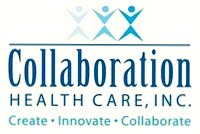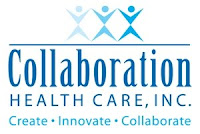
I had hoped to get away from the whole health care reform discussion for a little while. Quite frankly, I was growing tired of it. But, we have one more “event” to get through before we know which direction health care may be heading. Even after this so-called “summit meeting” on Thursday, we still may not know. I’ll make another post anyway.
I have to admit, when this process started out over a year ago, I was skeptical but still optimistic that we could come to a bi-partisan solution to the cost crisis we’re facing in this industry. When HR 3200 was introduced I became leery. When the Town Halls hit I became frustrated. When the Christmas Eve vote occurred in the Senate I was ticked-off. Like most Americans, I’m simply tired of the politics, and tired of the “protecting the turf of the self-interests” mentality that exists in health care. I’m not nearly as optimistic of the final outcome today.
After reading and summarizing the 1000+ pages of HR 3200 last July, reading the 11 page “President’s Proposal” was a snap; almost too much of a snap.
For a president who gives himself low marks for not explaining health care reform better to the average citizen- he didn’t raise his grade with this. (You can grab it by clicking here). It took me awhile to figure out what it even said.
Here’s my understanding.
In a nutshell, the President’s Proposal is reconciling some of the numbers between the Senate and House bills, pushing some dates around to accommodate some existing agreements, and adding some of the fraud and abuse initiatives requested by the Republicans to come up with a “bi-partisan” document.
The President’s Proposal eliminates the “Nebraska Absolution” and expands Medicaid Funding to all states and tries to address the need to reform the Medicare payment approach which contributes to the escalating costs. And, to continue with its grandstanding against the insurance industry (which is legitimate to a point), his proposal creates another government agency (the Health Insurance Rate Authority) to deal with health insurance pricing (in response to Anthem California’s recent request for a 30%+ rate increase for individual policyholders).
As I was reading it I was wondering what all of this is going to cost and the size of the bureaucracy that would be required to pull it off. I’ve said all along that the perfect free-market does not work in health care because of the way we’ve evolved. The government has to play a role no matter what we do. I understand that. But, there needs to be a balance. This is just too much government- and too much expense.
As the White House said when it introduced this thing, this is just the “starting point” for the discussion on Thursday. But, I have no idea how any real debate is going to occur since none of the major issues of disagreement were addressed.
A Kaiser Foundation Poll completed a couple of weeks ago found 38% of Americans would be “happy or relieved” if Congress ended up doing nothing on health care reform. About 58% would be “disappointed or angry”.
I still believe too much good work from both sides was accomplished over the past year to walk away and do nothing. All of the proposals (Republican and Democrat/free-market and organized-market) have components that could be put together to make a dramatic impact on the trajectory we find ourselves on today. Unfortunately, the legislative make-up we have in place doesn’t see it that way.
I see “reconciliation” on the horizon. And, I’ll be one of the 58% disappointed or angry citizens if that happens- even it means something was accomplished.





